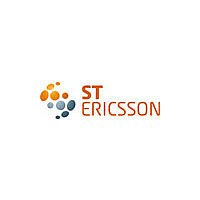ISP1161A1BMGA STEricsson, ISP1161A1BMGA Datasheet - Page 77

ISP1161A1BMGA
Manufacturer Part Number
ISP1161A1BMGA
Description
Manufacturer
STEricsson
Datasheet
1.ISP1161A1BMGA.pdf
(137 pages)
Specifications of ISP1161A1BMGA
Operating Temperature (max)
85C
Operating Temperature (min)
-40C
Operating Temperature Classification
Industrial
Mounting
Surface Mount
Lead Free Status / RoHS Status
Compliant
Available stocks
Company
Part Number
Manufacturer
Quantity
Price
Company:
Part Number:
ISP1161A1BMGA
Manufacturer:
EPCOS
Quantity:
6 700
Company:
Part Number:
ISP1161A1BMGA
Manufacturer:
ST-Ericsson Inc
Quantity:
10 000
ISP1161A1_5
Product data sheet
11.2.1 DMA for IN endpoint (internal DC to external USB host)
11.2.2 DMA for OUT endpoint (external USB host to internal DC)
11.2 Device DMA transfer
When the internal DMA handler is enabled and at least one buffer (Ping or Pong) is free,
the DREQ2 line is asserted. The external DMA controller then starts negotiating for control
of the bus. As soon as it has access, it asserts the DACK2 line and starts writing data. The
burst length is programmable. When the number of bytes equal to the burst length has
been written, the DREQ2 line is de-asserted. As a result, the DMA controller de-asserts
the DACK2 line and releases the bus. At that moment the whole cycle restarts for the next
burst.
When the buffer is full, the DREQ2 line will be de-asserted and the buffer is validated
(which means that it will be sent to the host when the next IN token comes in). When the
DMA transfer is terminated, the buffer is also validated (even if it is not full). A DMA
transfer is terminated when any of the following conditions are met:
When the internal DMA handler is enabled and at least one buffer is full, the DREQ2 line
is asserted. The external DMA controller then starts negotiating for control of the bus, and
as soon as it has access, it asserts the DACK2 line and starts reading the data. The burst
length is programmable. When the number of bytes equal to the burst length has been
read, the DREQ2 line is de-asserted. As a result, the DMA controller de-asserts the
DACK2 line and releases the bus. At that moment the whole cycle restarts for the next
burst. When all data are read, the DREQ2 line will be de-asserted and the buffer is
cleared (which means that it can be overwritten when a new packet comes in).
•
•
•
•
•
•
•
•
The SIE also checks for the device number and endpoint number and verifies whether
they are acceptable.
If the endpoint is enabled, the SIE checks the contents of the DcEndpointStatus
register. If the endpoint is empty, the data from USB is stored to FIFO during the data
phase, otherwise a NAK handshake is sent.
After the data phase, the SIE sends a handshake (ACK) to the host (except for ISO
endpoints).
The SIE updates the contents of the DcEndpointStatus register and the DcInterrupt
register, which in turn generates an interrupt to the microprocessor. For ISO
endpoints, the DcInterrupt register is updated as soon as data is received because
there is no handshake phase.
On receiving interrupt, the microprocessor reads the DcInterrupt register. It will know
which endpoint has generated the interrupt and reads the content of the
corresponding DcEndpointStatus register. If the buffer is full, it empties the buffer, so
that data can be received by the SIE at the next OUT token phase.
the DMA count is complete
bit DMAEN = 0
the DMA controller asserts EOT.
Rev. 05 — 29 September 2009
USB single-chip host and device controller
ISP1161A1
© ST-ERICSSON 2009. All rights reserved.
77 of 137












